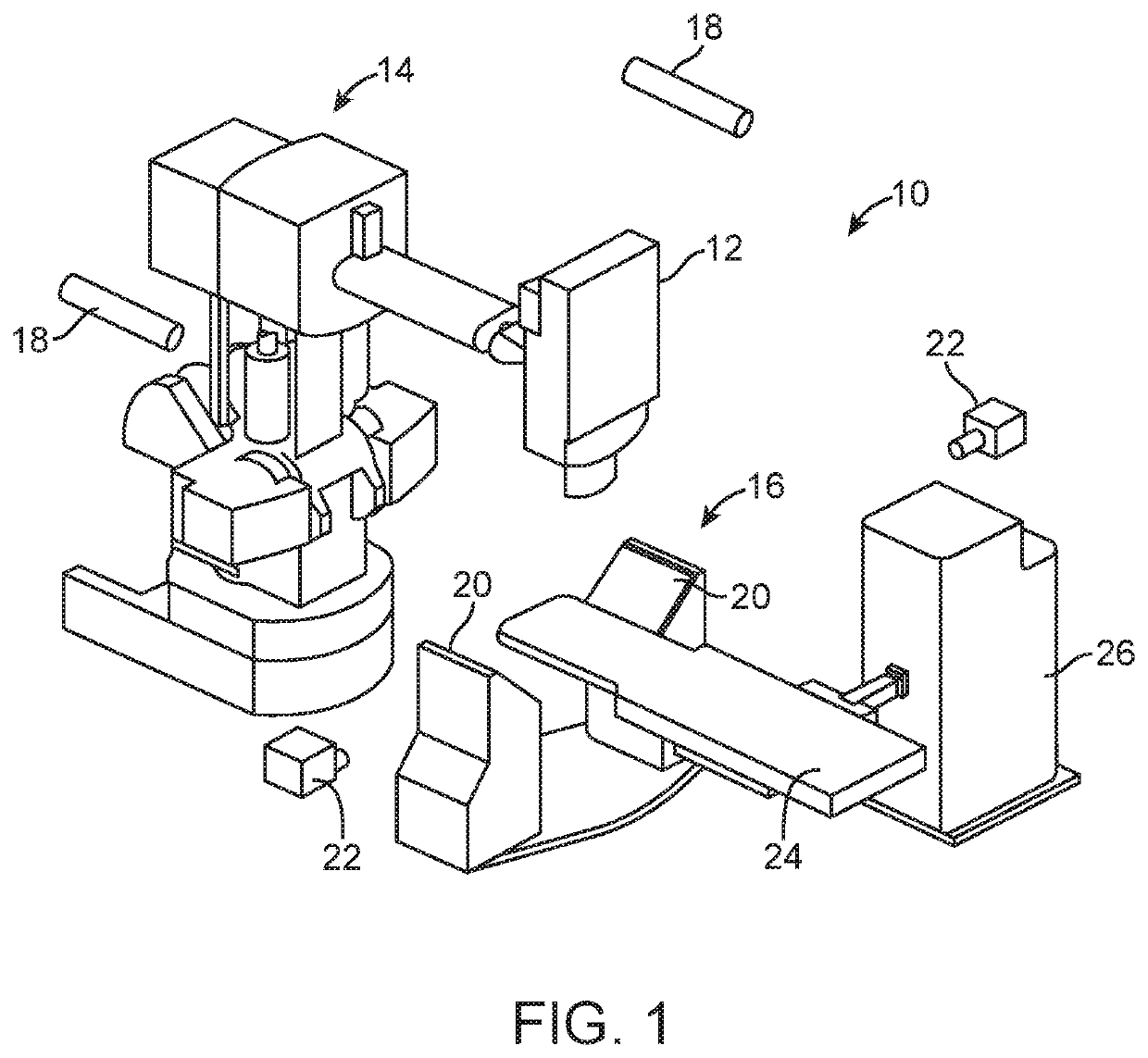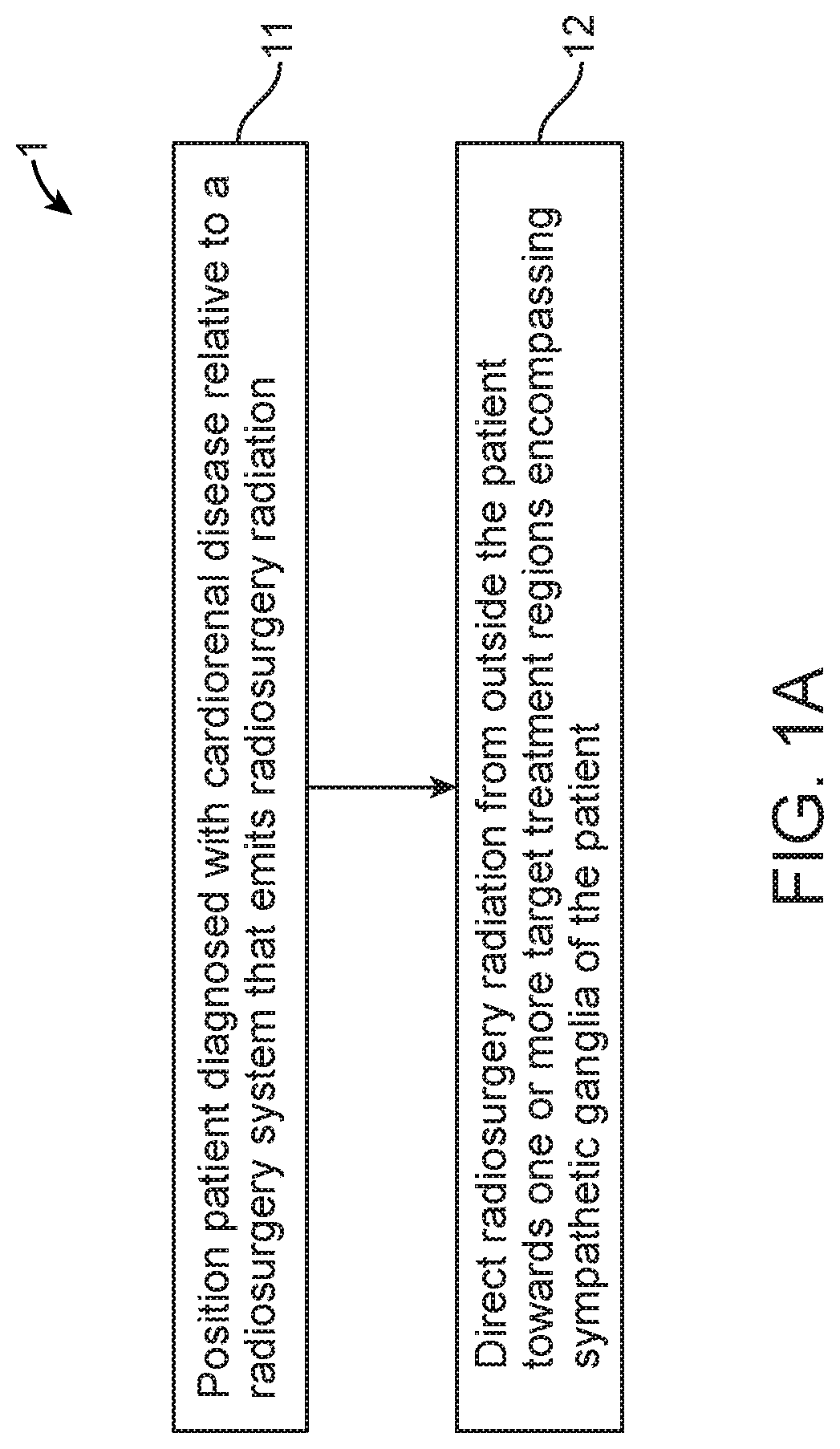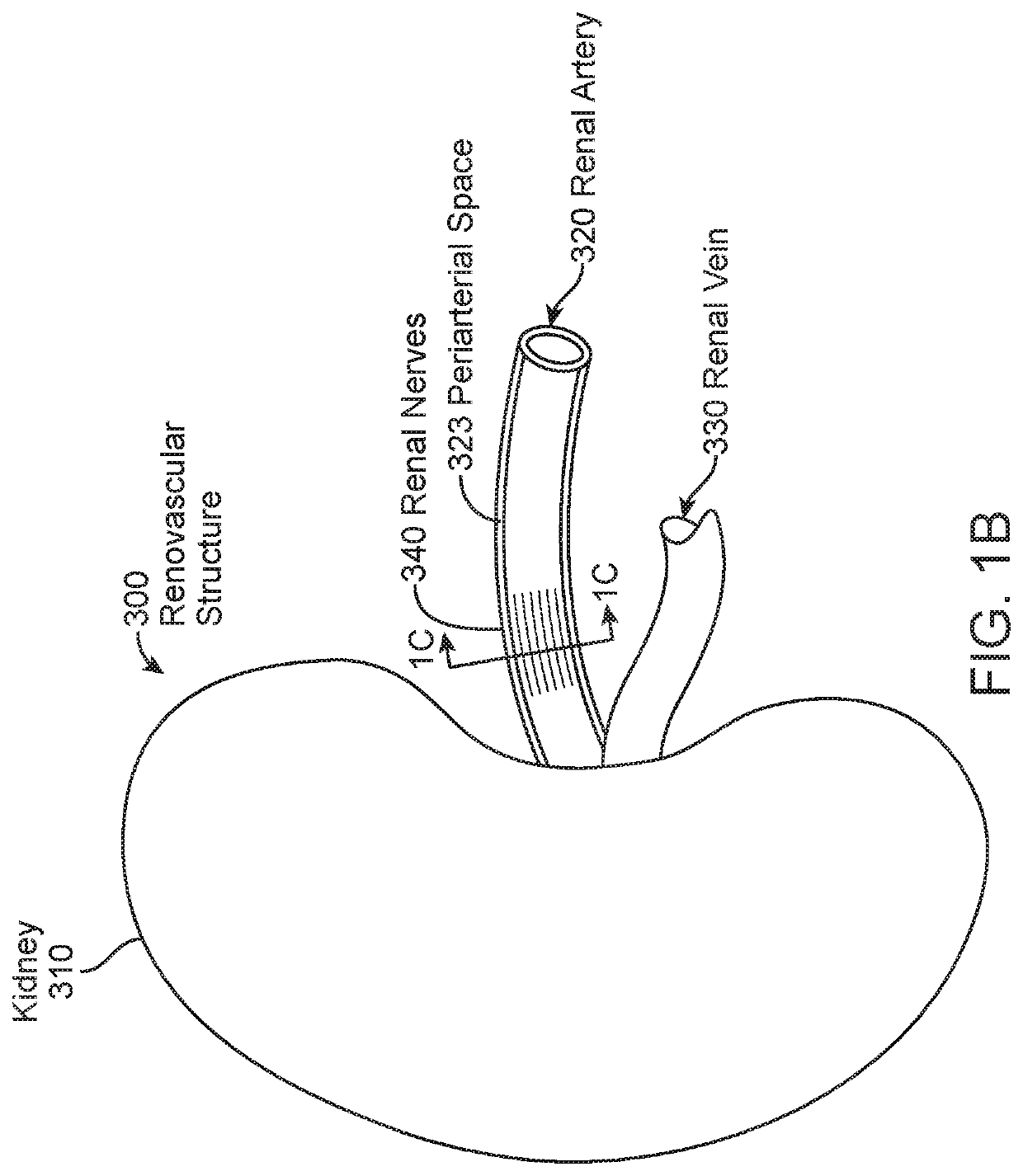Renovascular treatment device, system, and method for radiosurgically alleviating hypertension
a treatment device and a technology for hypertension, applied in the field of improved devices, systems and methods for treating patients, can solve the problems of affecting the treatment effect, affecting the patient's comfort, so as to avoid potential implant-induced occlusive response, improve patient comfort, and avoid the effect of reducing the risk of complications
- Summary
- Abstract
- Description
- Claims
- Application Information
AI Technical Summary
Benefits of technology
Problems solved by technology
Method used
Image
Examples
Embodiment Construction
[0062]The present invention generally provides improved systems, devices, and methods for treatment of tissue to alleviate cardiorenal disease, including hypertension, using radiosurgical systems. The embodiments of the present invention detailed herein and variations thereof may have the therapeutic effect of slowing, including halting, the progression of congestive heart failure via a non-invasive or minimally invasive (in embodiments utilizing catheters or percutaneous needles to implant surrogates, as detailed below) surgical procedure. Some or all embodiments detailed herein and variations thereof may be practiced to mitigate the conjunctive heart failure that sometimes develops following a myocardial infarction.
[0063]FIG. 1A provides an exemplary flowchart 1 of a method for treating cardiorenal disease of a patient, such as hypertension. At step 11, a patient diagnosed with cardiorenal disease, such as hypertension, is positioned relative to a radiosurgery system such as that ...
PUM
 Login to View More
Login to View More Abstract
Description
Claims
Application Information
 Login to View More
Login to View More - R&D
- Intellectual Property
- Life Sciences
- Materials
- Tech Scout
- Unparalleled Data Quality
- Higher Quality Content
- 60% Fewer Hallucinations
Browse by: Latest US Patents, China's latest patents, Technical Efficacy Thesaurus, Application Domain, Technology Topic, Popular Technical Reports.
© 2025 PatSnap. All rights reserved.Legal|Privacy policy|Modern Slavery Act Transparency Statement|Sitemap|About US| Contact US: help@patsnap.com



